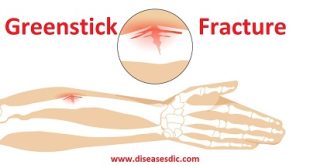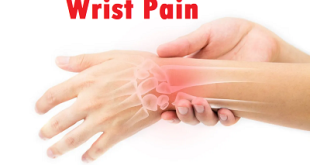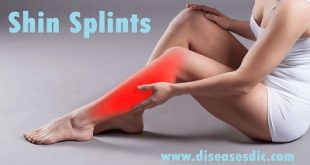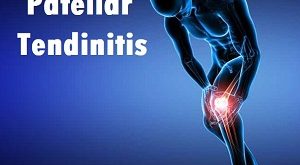Definition
Kniest dysplasia is collagenopathy collagen II affecting bone growth and is characterized by short stature (dwarfism), other skeletal abnormalities, and hearing and vision problems. The latter are mostly myopia, vitreous degeneration, and retinal detachment. Skeletal features may include kyphoscoliosis, platyspondyly, dumbbell-shaped bones in the arms and legs, long, gnarled fingers, and clubfoot. Skeletal abnormalities may limit physical activity if they cause movement restrictions. In addition, joint problems may also cause arthritis.
The abnormalities associated with Kniest dysplasia result from mutations in the COL2A1 gene, located on the long arm of chromosome 12 (12q13.11). This gene encodes a component of collagen type II, called the pro-alpha1 (II) chain. This type of collagen is found primarily in the vitreous and cartilage. Collagen type II is essential for normal bone development and other connective tissues that form the support frame body. Collagen type II is also part of the vitreous, the inner ear, and the nucleus pulposus.
Pathophysiology
Mutations of this genetic segment lead to abnormal type II collagen with specifically shorter monomers. Grossly, the cartilage feels soft. Histologically, the cartilage has lacunae throughout, giving it the appearance of “Swiss Cheese.” As a result, all tissues containing cartilage are affected with respect to growth, structure, and function.
Causes of Kniest dysplasia
Kniest dysplasia is one of a spectrum of skeletal disorders caused by mutations in the COL2A1 gene. This gene provides instructions for making a protein that forms type II collagen. This type of collagen is found mostly in the clear gel that fills the eyeball (the vitreous) and in cartilage.
Cartilage is a tough, flexible tissue that makes up much of the skeleton during early development.
Most cartilage is later converted to bone, except for the cartilage that continues to cover and protect the ends of bones and is present in the nose and external ears.
Type II collagen is essential for the normal development of bones and other connective tissues that form the body’s supportive framework.
Most mutations in the COL2A1 gene that cause Kniest dysplasia interfere with the assembly of type II collagen molecules.
Abnormal collagen prevents bones and other connective tissues from developing properly, which leads to the signs and symptoms of Kniest dysplasia.
Genetics of Kniest Dysplasia
Kniest dysplasia symptoms
These symptoms may be different from person to person. Some people may have more symptoms than others and symptoms can range from mild to severe. This list does not include every symptom.
Common symptoms seen in patients with Kniest syndrome include:
- Prominent eyes and foreheads
- A depressed midface
- Large joints (hips and knees) are big, stiff and knobby
- Small joints (fingers) are affected as the patient ages
- Cleft palate
- Chronic hearing loss
- Eye problems, such as glaucoma and retinal detachment
The spine and epiphysis (the rounded end of the long bones) are also affected by Kniest syndrome.
Orthopedic Conditions Seen with Kneist Syndrome
Orthopaedic conditions commonly associated with Kniest syndrome include:
- Cervical instability if there is an abnormal amount of motion the cervical spine needs to be stabilized
- Kyphosis and or scoliosis (curvature and or rounding of the back) may be present early and can be progressive.
- Stiff joints and premature arthritis
- Lower extremity misalignment
- Clubfeet
Complications of Kniest dysplasia
Short stature is a common complication that children, as well as adults with Kniest dysplasia or kniest syndrome, have. All the complications associated with short stature are also present in them. However, with the advancement of treatment, these additional and associated complications can well be managed. Hearing and visual difficulties and complications are common in them. Some of the children with Kniest dysplasia or Kniest syndrome also have hydrocephalus or excessive fluid around the brain. The gradual development of apnea or a temporary stop in breathing during sleep is also a possible complication that is seen to occur in many. This is a result of airway obstruction by the adenoids or the tonsils caused by the abnormally small bone anatomy. However, with early detection and surgical correction, all these complications can be managed.
What becomes more serious problems and complications for these children, as they grow into dwarf adults are:
- Ear infections and hearing loss
- Weight problems
- Breathing problems
- Crowding of teeth
- Early arthritis and trouble with joint flexibility
- The curvature of the spine bowed legs
- Lower back pain
- Late development of motor skills like walking and sitting up at older ages than an average-sized child
- Leg numbness.
However, with proper therapy and guidance of the medical caregiver, these difficulties can be lessened to a great extent, making sure that the individual receives a better life and increase physical activity.
A girl with Kniest Dysplasia
Diagnosis
Diagnostic evaluation usually begins with a thorough medical history and physical examination of your child. At Children’s Hospital of Philadelphia (CHOP), clinical experts use a variety of diagnostic tests to diagnose Kniest dysplasia and possible complications, including:
- X-rays, which produce images of bones.
- Magnetic resonance imaging (MRI), which uses a combination of large magnets, radiofrequencies and a computer to produce detailed images of organs and structures within the body.
- Computed tomography (CT) scan, which uses a combination of X-rays and computer technology to produce cross-sectional images (“slices”) of the body.
- Genetic testing, in which a sample of your child’s saliva or blood is used to identify your child’s DNA.
- EOS imaging, an imaging technology that creates 3-dimensional models from two planar images. Unlike a CT scan, EOS images are taken while the child is in an upright or standing position, enabling improved diagnosis due to weight-bearing positioning.
All of these medical tests allow clinicians to gather a full picture of your child’s medical health and help in determining an individualized care plan.
In some cases, Kniest dysplasia can be suspected or diagnosed when the child is still in its mother’s womb. Prenatal tests such as amniocentesis and CVS can identify the known Kniest mutations; a sonogram at the end of second trimester can identify some of the bone anomalies. For more information about prenatal testing for skeletal dysplasias, see the Center for Fetal Diagnosis and Treatment.
Kniest dysplasia treatment
Because Kniest dysplasia can affect various body systems, treatments can vary between non-surgical and surgical treatments. Patients will be monitored over time, and treatments will be provided based on the complications that arise.
Surgical
- Spinal Fusion for patients with severe kyphoscoliosis
- Extension Osteotomy to help treat progressive joint limitation
- Surgical realignment
- Retinal Detachment repair
- Myringotomy (a surgical procedure to relieve pressure by draining fluid from the eardrum)
Non-surgical
- Routine monitoring
- Oxygen support, CPAP, Bipap, Mechanical Ventilation
- Physical therapy
- Bracing
Prevention of Kniest dysplasia
The genetic alteration found in this patient suggested that this prevented the normal splicing of COL2A1, resulting in an abnormal type II collagen product.
At Nemours, we work as a team to maximize children’s mobility, correct deformity and prevent future complications.
Premature cleavage of C-propeptide disrupting fibrillogenesis; soft cartilage with vacuolar degeneration of chondrocytes and matrix PROGNOSIS: incapacitation may result from progressive painful, contracted joints TREATMENT: prevent joint contractures.
The stiffness of the metacarpophalangeal and interphalangeal joints prevents the patient from making a complete fist. Precocious osteoarthritis develops and may become incapacitating by late childhood.
It was obvious that, in order to discover the causes of congenital malformations and cast strategies for their prevention, it would be necessary to have knowledge of the baseline of their frequency, and that this required uniformity of definition of terms
 Diseases Treatments Dictionary This is complete solution to read all diseases treatments Which covers Prevention, Causes, Symptoms, Medical Terms, Drugs, Prescription, Natural Remedies with cures and Treatments. Most of the common diseases were listed in names, split with categories.
Diseases Treatments Dictionary This is complete solution to read all diseases treatments Which covers Prevention, Causes, Symptoms, Medical Terms, Drugs, Prescription, Natural Remedies with cures and Treatments. Most of the common diseases were listed in names, split with categories.







